*This post contains affiliate links, if you make a purchase I get a small commission
The Azores islands are one of those yet to be discovered, off the radar, destinations with some of the most spectacular scenery you will ever see. The most well-known and most populated island, São Miguel island, is most people’s first stop on their Azores journey.
This island offers a little bit of everything, from great food, to beautiful vistas and great hiking, to the quaint but growing city of Ponta Delgada. It’s sure to charm everyone. An active volcanic island, it provides some of the best natural hot spring pools in the world.
Best time to visit
Though the water temperature in the outdoor thermal pools is always warm, it depends on what type of experience you want. In the winter, it rains often and in my opinion only enhances the experience and natural beauty of the place. There is nothing like sitting in a thermal spring of warm waters when it is raining out.
There are 3 main locations on the island to experience natural thermal pools, each very different from the other.
Terra Nostra Gardens
The first, and probably one of the best hot springs is in the town of Furnas within the Furnas Valley. A place so volcanically active water bubbles in the caldeiras around the town, wafting that pungent sulfur smell all around you. And located in the beautiful Terra Nostra Gardens is the mother of all thermal pools.
The Terra Nostra Park started as an orange plantation in 1775, owned by Thomas Hickling, a wealthy merchant from Boston. The orange market collapsed and in 1848 the site was bought by the Visconde da Praia, who had a penchant for gardening and built the house that is currently on the property and at the head of this magnificent hot spring along with its beautiful botanical gardens.
The mineral-rich waters appear orange, staining everything it touches, including you and your swimsuit. But that hot water and the smoothness of your skin from the therapeutic properties makes the orange hue a minor detail.
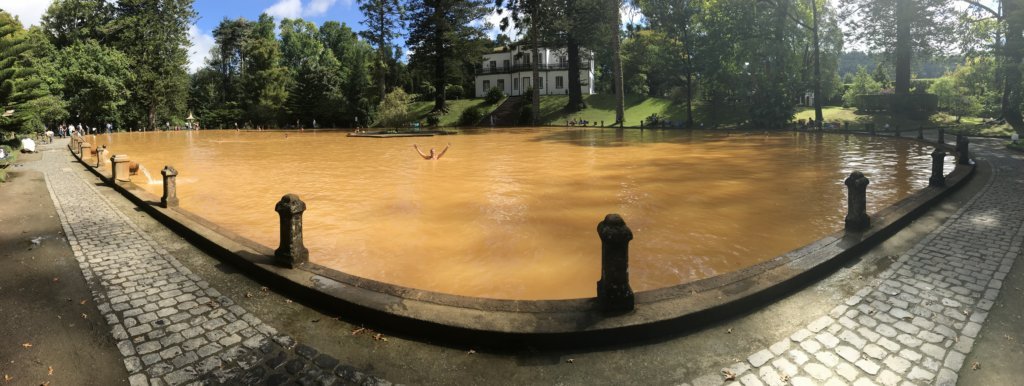
A short walk from the main pool, and hidden in the foliage, sits several hotter, thermal baths. Their milky blue mineral water surrounded by rich green foliage feels like entering a hot tub in the jungle. Showers and changerooms are available next to the hot springs, so you can shower off and then go wander around the gardens. But make sure to bring your own towel, because none will be provided for you.
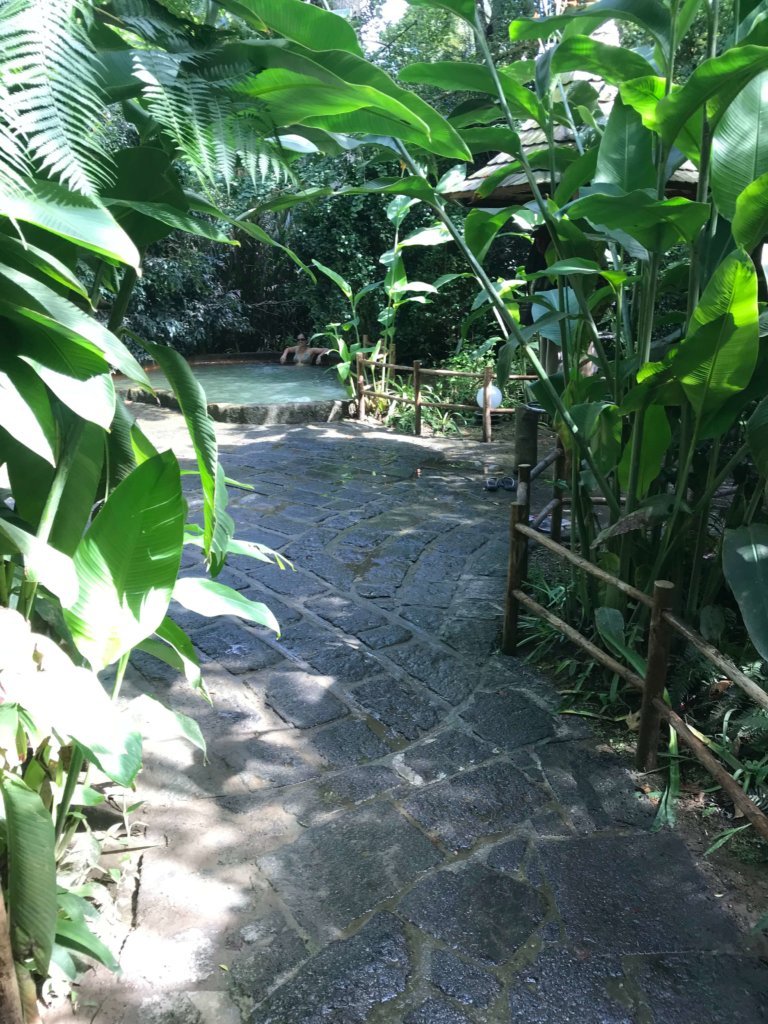
Bonus: if you eat at the Terra Nostra Garden Hotel, you get free entrance to the gardens and thus the thermal pools. I would recommend their cozido, a specialty of the area made up of various meats and vegetables cooked for 5-7 hours inside a caldeira.
Caldeira Velha
Heading west, near Lagoa de Fogo (or “Lake of Fire”) and located on the north slope of the Fogo Volcano is Caldeira Vehla. This hot spot is like stepping into Jurassic Park. The wild foliage is a deep green, with wide, flat leaves encroaching on a variety of natural hot springs.
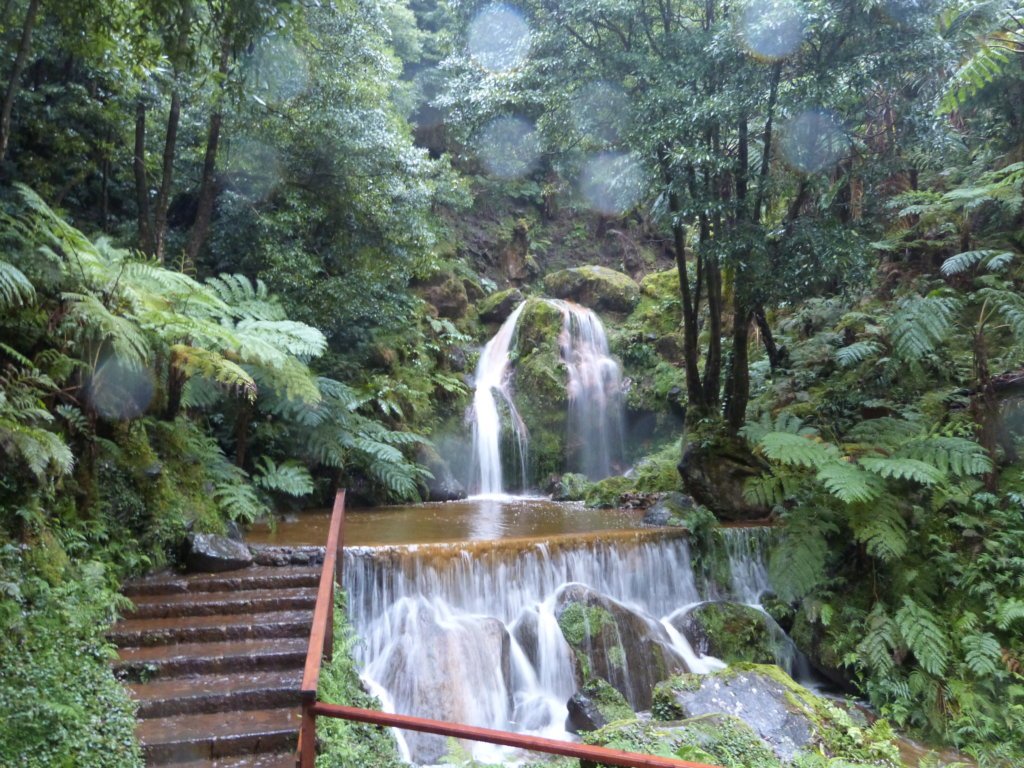
There are different pools with different temperatures with the most beautiful of them, and the coldest, at 70 degrees Fahrenheit, is the waterfall.
Depending on the time of year, this may not be your first choice. Like in October. When it’s raining. The lower 3 pools have varying temperatures but are all around 98 degrees, and one feeds into the next.
The ticket, is 8 Euros per person, and has a time limit of 2 hours. This isn’t strictly enforced during the shoulder season. There are showers, change rooms, and washrooms all on site as well as a the Caldeira Vehla Environmental Interpretation Center with information on the pools.
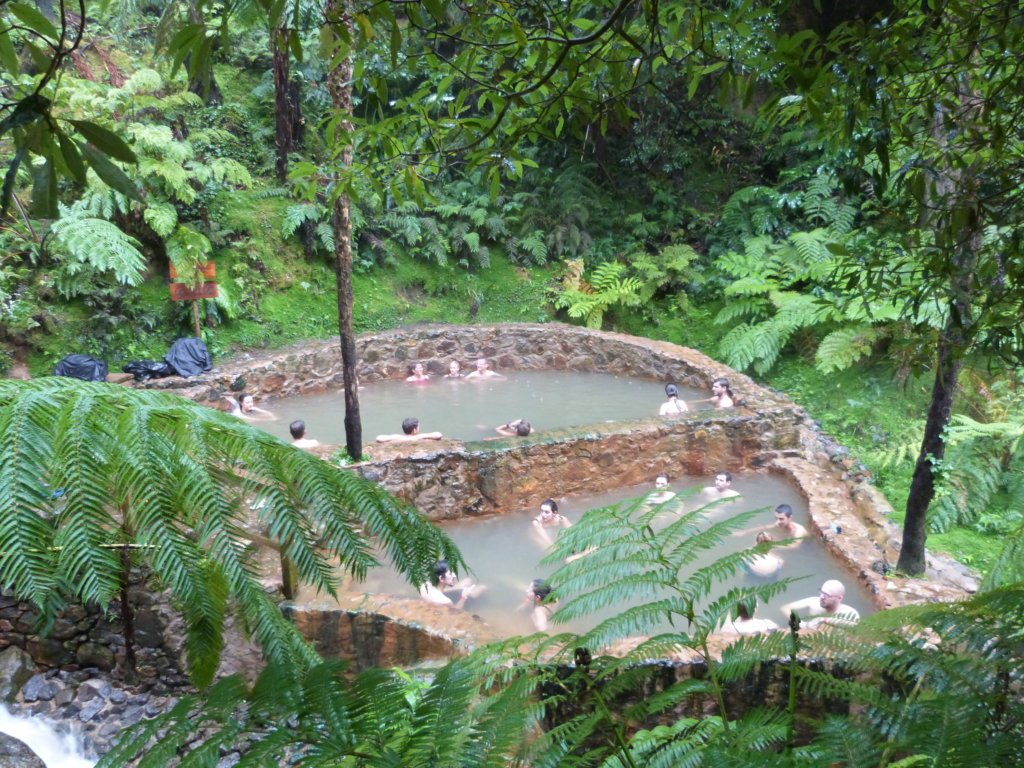
Continuing your trip west, to the very end, is a spa.
Termas da Ferraria
This area used to be an old bath house where a doctor would visit twice a week, descending by donkey along a little trail.
These days you don’t need a donkey to get you down the treacherous road to the spa. But you do have to mind the frightfully narrow switchbacks that the road makes down the seaside cliff.
If you want to indulge in the spa for 4 hours, it will cost you 29 Euros. But you don’t have to go to the spa to enjoy this natural wonder. During the high season you will be required to pay 6 Euros to access the hot spring in the sea.
During the shoulder season and off season, they don’t seem to require payment. At least not from my experience. Walking past the spa, from the parking lot, you will take a small foot bath to a rocky outcropping along the sea with its own natural large thermal pool in the ocean.
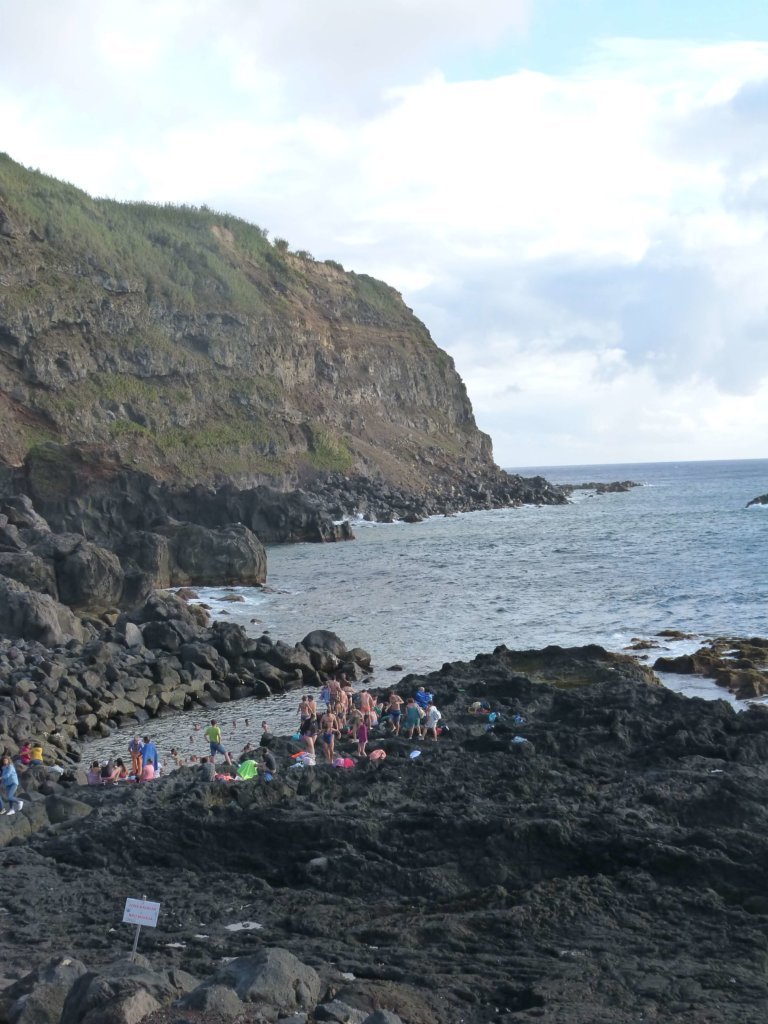
Here you will find a small inlet of water, where heat bubbles up from the rocks warming the ocean water at low tide, making it perfect hot tub temperature.
The area is equipped with ropes strung from one side of the inlet to the other, where you can just hold on and let the waves rock you back and forth in this incredibly warm ocean spa. There is also a small snack bar, showers, washrooms and change rooms freely available to those that need them.
This place is incredibly popular at low tide and I was in complete awe hanging onto the rope and listening to all the languages being spoke around me, as I floated in the abyss. It was a melting pot of cultures, all there for the same reason, relaxation and joy.
We shared no differences during that time, as people laughed and smiled and just had a good time. Wouldn’t it be great if we could spread that joy around?
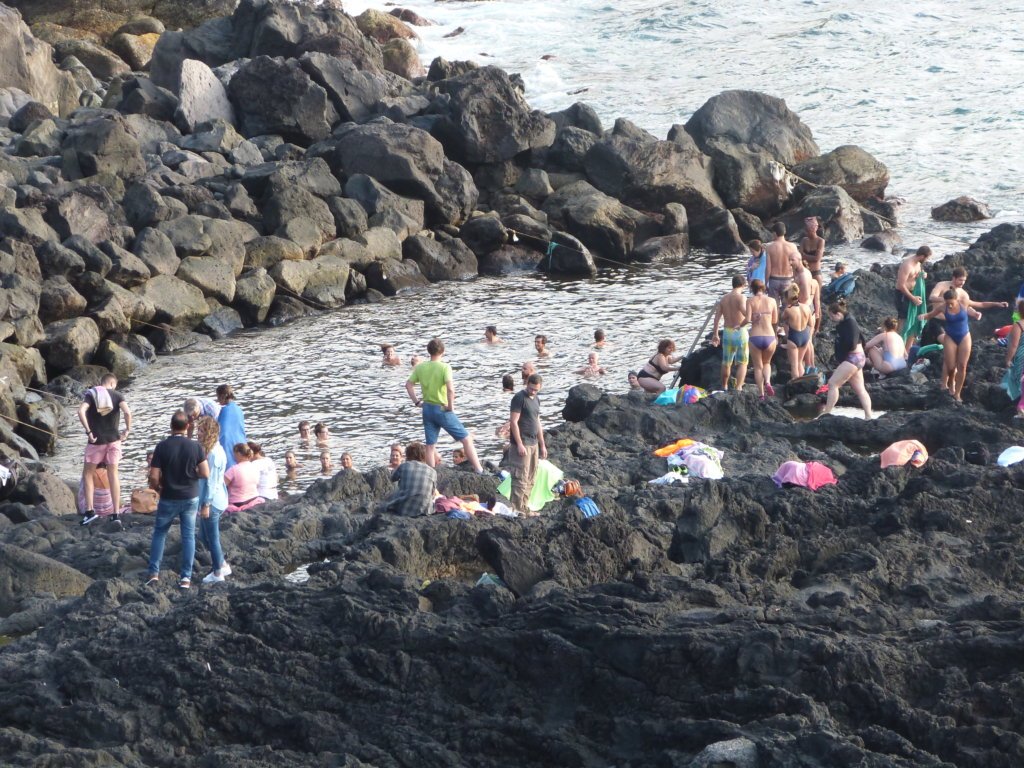
Concluding thoughts
So, no matter your style, there is a natural hot spring for everyone, a perfect activity on a rainy day.
For more inspiration on the best things to do in São Miguel check my latest guest post.
Heading to the Azores? Make sure to grab a copy of my guidebook The Azores: A guide for hikers.
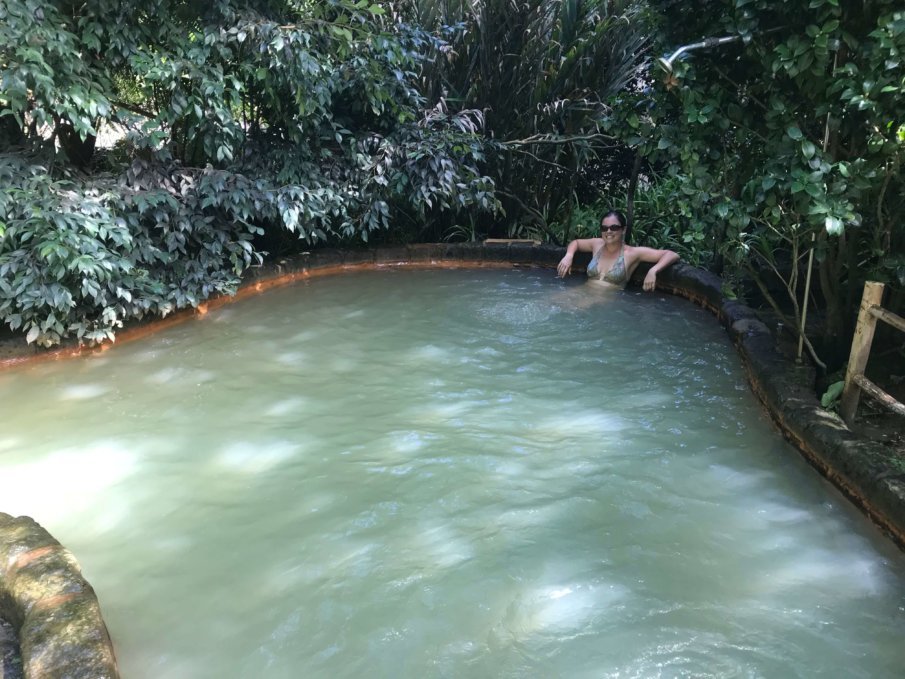
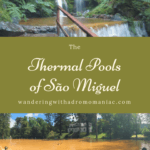


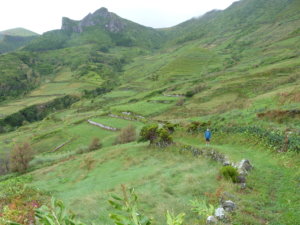
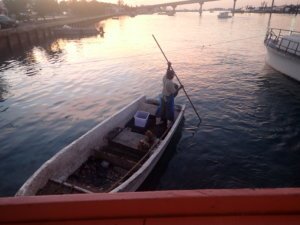
Comments
Pingback: The Ultimate Guide to Western São Miguel - Wandering with a Dromomaniac
Pingback: The Ultimate Guide to Eastern São Miguel - Wandering with a Dromomaniac %
Pingback: 4 Things to do in Furnas, Azores - Wandering with a Dromomaniac
Pingback: Best guide for things to do in Furnas, Azores [2025]